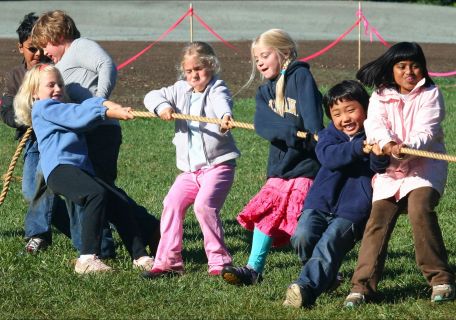

A Balanced Education Promotes Resilience
Waldorf education is an intentionally balanced approach to teaching with the goal of graduating happy, healthy, and resilient young people. We interweave academics, artistic activities, movement and outdoor time in a way that reduces stress and enhances learning. We provide rhythm for each day, season and year, which builds confidence and ensures that students feel secure. Social-emotional learning and problem solving are integrated throughout our curriculum so children develop the skills they need to thrive. We are a community where students feel seen, recognized, and challenged to do their best work and be their best selves.
This post is based on the findings of Ann S. Masten and Andrew J. Barnes in their National Library of Medicine paper, Resilience in Children: Developmental Perspectives. Please refer to the full paper for all citations.
Evidence continues to accumulate on the short- and long-term risks to health and well-being posed by adverse life experiences in children, particularly when adversities are prolonged, cumulative, or occurring during sensitive periods in early neurobiological development. Recent national and global examples include the growing concern about the impact of disasters, war, poverty, pandemics, climate change, and associated displacement on the global well-being of children. This confluence of threats to the present and future health of children motivates us to look at resilience and the factors that can support its development.
Resilience in humans can be broadly defined as the capacity to adapt successfully to challenges that threaten the function, survival, or future development of the individual. Resilience is also a feature of complex adaptive systems, including human individuals, but also families, economies, ecosystems, and organizations. This definition can also be applied to systems within an individual, such as the human immune system.

One of the most important implications of this definition is the idea that the resilience of a developing child is not circumscribed within the body and mind of that child. The capacity of an individual to adapt to challenges depends on their connections to other people and systems external to them through relationships and other processes. This includes their school environment and the relationships and experiences that are part of it.
For an individual person, resilience reflects all the adaptive capacity available at a given time in a given context that can be drawn upon to respond to current or future challenges facing the individual, through many different processes and connections. Resilience is not a trait, although individual differences in personality or cognitive skills clearly contribute to adaptive capacity. Supportive relationships play an enormous role in resilience across the lifespan. Close attachment bonds with a teacher or other caregiver and effective parenting can protect a young child in multiple ways that are not located “in the child”.
Human individuals have so much capacity for adaptation to adversity in part because their resilience depends on many interacting systems that co-evolved in biological and cultural evolution, conferring adaptive advantages. Moreover, children are often protected by multiple “back-up” systems, particularly embedded in their relationships with other people in their homes and communities.
Dose matters. Many studies of resilience have shown that the severity of exposure either to one extremely traumatic event or in the sense of cumulative risk, makes a difference. At the same time, these studies also show variation among individuals at similar levels of risk, some of whom are manifesting positive adaptation and development consistent with the presence of considerable resilience. In effect, these adaptive individuals are doing better than might be expected. These individuals motivated questions about how to account for their success and provided important clues for resilience science pertaining to the ongoing search for answers to the question of what makes a difference.
The shortlist of common resilience factors for child development shows that school environment can play an important role in helping children develop resilience, in particular the relationship development, teacher looping, intentional community, developmentally appropriate approach, and rhythms and rituals of a Waldorf education.
- Caring family, sensitive caregiving (nurturing family members)
- Close relationships, emotional security, belonging (family cohesion, belonging)
- Skilled parenting (skilled family management)
- Agency, motivation to adapt (active coping, mastery)Problem-solving skills, planning, executive function skills (collaborative problem-solving, family flexibility)
- Self-regulation skills, emotion regulation (co-regulation, balancing family needs)
- Self-efficacy, positive view of the self or identity (positive views of family and family identity)
- Hope, faith, optimism (hope, faith, optimism, positive family outlook)
- Meaning-making, belief life has meaning (coherence, family purpose, collective meaning-making)
- Routines and rituals (family routines and rituals, family role organization)
- Engagement in a well-functioning school
- Connections with well-functioning communities
